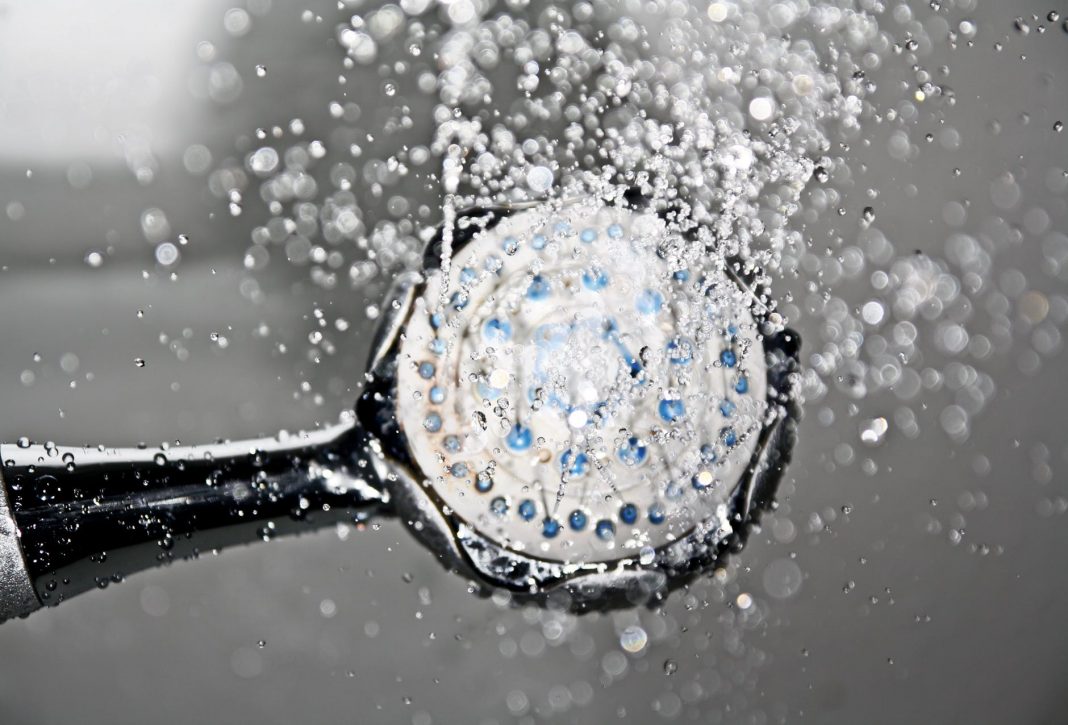 |
|
| Issue #118 • July/August, 2009 |
With continued shortages of wood for home heating, the Greeks built the North Hill section of Olympus in the 5th century B.C. This planned community had all streets running east and west, with each parallel street at a higher elevation as you went north. In this way every home had a large south-facing window which allowed the sun to heat up the uninsulated heavy masonry walls during the day, while heavy drapes were drawn at night to seal in this solar heat. If a neighbor later built an addition that blocked the warming sun, the offended homeowner could sue in court to remove the shading construction.
Around the 1st century A.D., the Romans improved on this design by splitting mica into thin sheets or using hand-formed sheet glass to cover open skylights and south-facing windows. This made it more efficient to warm their many public baths using the sun’s rays, while holding in the heat. By the 1800s many upscale London homes included solar greenhouses or conservatories, and glass-covered insulated wood boxes were being used to heat water with the sun.
|
By the early 1900s, many upscale homes in the United States were able to buy solar water heaters for the huge price of $25 including installation. These insulated glass-covered boxes contained multiple metal water tanks which were installed on a south-facing roof. Valves were located next to the bathtub so the homeowner could route the cold water supply up through the solar-heated tanks then back into the bathtub. Through most of the 1930s many homes in California and Florida had commercially-made solar water heaters to heat hot water where utility natural gas was not available.
These early solar water heaters were very simple to operate and did not require pumps or controls. A solar panel was installed at the lowest part of a south-facing roof just above the roof eave. An insulated storage tank was mounted as high up in the attic as possible. Since heat rises, the heated water in the lower solar panel pushed its way up to the top of the upper tank, and the colder water at the bottom returned to the solar panel to be reheated as a result of this thermo-siphon effect.
When an attic was too small to house the tank, or the roof slope was too shallow to provide enough tank elevation, the installer would cut a hole in the roof peak and the hot-water tank would be mounted upright sticking up out of the roof. A fake chimney was then built around the tank to provide insulation and camouflage. Once low-cost oil and gas was available and piped throughout the towns and cities, solar hot water heaters were gradually replaced with cheap gas-fired hot water heaters and the solar industry in the United States disappeared until a revival in the late 1970s after an energy crisis brought on by two oil embargos.
When I was receiving my solar training in Florida back in the early 1970s, we were asked to replace an aging solar hot water heater with a new system. When we removed the old solar thermo-siphon system, the nameplate on the commercially-made solar panel was dated 1933. As you see, solar hot water heating is not new, but today’s systems are much more efficient and are made with longer-lasting materials.
System types
There are actually endless varieties and types of solar hot water heaters, but I am going to only address the most popular system types used in the United States today:
Solar batch heater:
The solar batch heater is actually just an updated version of the early 1800s batch heaters, and is the most popular type of homemade solar water heater since they are so easy to build. The basic design consists of a large insulated box with a glass cover, containing one or more bare-metal water-storage tanks laying side-by-side. Homemade units have external enclosures made from heat-resistant redwood or concrete blocks, while commercially made units are fabricated from galvanized steel or aluminum.
Batch solar heaters can be fairly heavy since the roof-mounted tanks are full of water, and there is a high risk of damage when temperatures drop below freezing. Therefore, solar batch heaters are usually only found in southern climates. Since the heater’s black painted-metal tanks quickly heat up inside the insulated boxes after the sun’s rays pass through the glass cover, these batch heaters are still the simplest and lowest cost forms of solar water heaters. Batch solar water heaters are used extensively in developing and tropical countries.
Antifreeze systems:
Larger families, with increased hot water demands for multiple showers, clothes washing, and dishwashing, usually require more hot water per day than most solar batch heaters can provide. Since homeowners expect hot water in early mornings or late evenings when the sky is dark, larger and heavier solar storage tanks had to be moved from the attic into interior basements or utility rooms. Since the solar storage tank would now be below the elevation of the roof-mounted solar panels, a circulating pump was required to circulate the solar-heated water.
|
A simple temperature control turns this pump on when the solar panel is hot, and off when the solar panel is colder than the water in the tank. The simplest designs circulated domestic water instead of antifreeze solutions from the tank through the solar panels. These are normally only installed in southern climates due to the danger of the water freezing in the above-roof piping and solar panels.
To reduce the risk of freezing, a heat-exchanger coil can be added inside near the bottom of the insulated hot water tank, or wrapped around the perimeter shell of the tank before covering with insulation and outer shell. Now an antifreeze solution can be circulated through the roof-mounted solar panels then back through the heat exchange coil to heat the domestic water stored in the insulated tank without mixing with the water in the tank.
Since ethylene-glycol automobile antifreeze is highly toxic, building codes required design modifications to insure a leak in the antifreeze piping loop could not contaminate the domestic water supply. Non-toxic propylene-glycol antifreeze designed specifically for solar hot water systems are now available that are much safer. Care must be used when sizing an antifreeze-based solar hot water heater since each time the tank reaches its high-temperature limit, the control turns off the circulating pump, but the sun may still be blazing. This means the antifreeze and water remaining in the above-roof piping can easily reach boiling point and turn to steam.
Relief valves and a small expansion tank can be installed in the system to relieve this pressure, but venting steam will result in reducing the fluid level in the solar piping loop.
Most systems include an automatic valve that will add domestic cold water to repressurize the solar-piping loop when this happens. However, after repeated cycles of overheating and refilling with tap water, this can result in the solar fluid becoming mostly water, which could freeze if freeze prevention chemicals are not manually refilled periodically by a service technician.
Many building codes will not allow a direct piping connecting between the chemically-treated solar piping loop and the home’s domestic water supply. Refilling a solar-piping loop requires a portable pumping system and chemical feed tank which refills the system while removing any air trapped at all high points in the solar-piping loop. Trapped air can cause the solar pump to cavitate (form bubbles) and stop pumping when this air is allowed to move through the piping then into the pump. Higher-cost antifreeze systems usually include a heat rejecting fan-coil or other device to waste this excess heat which avoids making steam by keeping the fluid circulating through the solar panels.
Drain-back systems:
Although the drain-back system is about as fail-safe as you can get, it does require extra effort during system sizing and installation. The drain-back system normally uses flat-plate solar collections having all-copper water passages, since water is used as the heat transfer fluid. Untreated water would quickly damage solar panels containing aluminum tubing which require special heat transfer fluids, so copper-tube water passages are used in most brands of solar panels.
A drain-back system does not require an expansion tank because a separate holding tank is used to store all water circulating through the solar loop when the pump is off. This small insulated tank must always have an air space remaining above the water level. This allows air to flow back through the solar loop piping, since this water drains back into the holding tank when the pump is turned off.
|
Since this draining of all water from the above roof piping and solar panels occurs due to gravity alone, a power outage will also cause the system to drain back, which makes it fail-safe. All piping in the solar loop and all solar panels must be installed with a slight slope towards this holding tank so no liquid remains in the panels to freeze when the pump turns off.
Since this piping and the solar panels fully drain when the pump turns off, there will be no liquid in the very hot solar panels to flash to steam and be discharged out the pressure relief valve. When there is a significant difference in elevation between the hot water storage tank and the solar panels, some drain-back system designers will locate the drain-back holding tank on an upper floor level and not next to the hot water tank which may be located in a lower basement or ground floor.
This significantly reduces the size of the solar loop pump since it does not have to pump from a very low elevation up to a very high elevation. This design issue is not a problem in sealed antifreeze-based solar loops, since both the supply and return risers are full of liquid and have no elevation pumping head to overcome.
Solar panel construction
Not counting the solar heaters mentioned earlier, which have the hot-water tank located on the roof inside or above the solar panel, most solar hot water heating designs use a flat-plate solar panel. These are typically a shallow box made from aluminum or galvanized sheet steel. Although panel sizes are increasing, the original flat-plate solar panels made in the United States were covered with storm door glass. This strong, tempered glass easily handled high temperatures, thermal shock, and resisted breakage from hail and stray baseballs.
Solar panel manufacturers in the 1970s discovered storm-door glass to be very low-cost and readily available, but the odd dimension of this glass caused most solar panels to be about 3 by 6½ feet. This size panel was harder to install, since the construction industry has standardized on four-foot spacing. Now that solar is more mainstream, solar panel manufacturers are starting to use custom-sized tempered-glass sheets, which allows for making larger and more standard-sized hot water panels.
A formed lip around the box frame supports the tempered glass, and a stainless-steel rim and high-temperature rubber gasket supports the glass and seals the front of the fabricated box. All four sides and back of the box are lined with rigid insulation board. Due to the very high temperatures involved, standard building insulation cannot be used, as these materials contain oils and chemicals that will outgas and coat the inside of the glass cover, which will reduce the efficiency of the solar panel.
|
Mounted on top of this insulation bed is the absorber plate, which consists of multiple parallel fluid passages with a large surface area to absorb the sun’s heat. Many early panel designs were all aluminum construction, but the aluminum water passages would quickly corrode and leak after the antifreeze was diluted. Since aluminum sheet is still less costly than copper, many flat-plate solar panels are made with small copper tubing to carry the heated fluid between the lower and upper piping headers inside the solar panels. Wide aluminum “fins” are mechanically pressed around the small copper tubes, which provides good heat transfer between the large aluminum absorber plates and the copper tubing without the high cost of a solid copper absorber plate.
In warmer climates, there will be only one layer of glass covering the solar panel. The heat absorbing plates and piping will have a high-temperature flat black paint finish. In middle latitudes, a special black-chrome layer is electroplated onto the surface of these aluminum fins. This is more costly than paint, but provides better heat absorption and less reflection of the sun’s rays. In extreme northern climates, a double layer of glass covering is used that includes an insulating airspace between the glass layers to reduce heat loss from the solar panel, but this will significantly increase system cost.
One of the newest solar heat collector technologies is the evacuated tube collector. This design requires only an upper piping header with no bottom header.
Sloping down from this upper piping header will be a number of parallel copper tubes which are sealed at their bottom ends. After this header and support frame have been installed, special hollow glass tubes are installed and locked into the upper support frame. The smaller copper tubes fit down through this hollow center of these sealed glass tubes. These glass cylinders look like the glass canisters inside a thermos bottle, and include a mirrored surface on the rear back half of the tubes.
This assembly of evacuated glass cylinders provides an extremely good insulator around the copper tube fluid passages, while focusing the sun’s rays directly into the copper tubing with the mirrored back surface. Although these evacuated tube collectors can provide much higher temperatures and need less roof area due to their higher thermal efficiency, they also require more care during installation and better monitoring of the antifreeze fluid to prevent freezing. In addition, most evacuated-tube solar collectors will require a way to reject excess heat when the water storage tank has reached its high temperature limit, or these collectors will quickly produce steam which will lead to high pressure and system damage.
Solar tanks & exchangers
As briefly mentioned earlier, commercially-made solar tanks include a built-in heat exchanger coil. This can be installed either inside the tank near the bottom where the water is colder, or wrapped around the outside surface of the inner tank shell and insulated by the outer shell. System designers want to collect as much solar energy as possible during the relatively short sun-hours each day, so they want the water as hot as possible to make it last longer during the hours the sun is not shining. To handle the higher tank temperatures, many solar storage tanks are lined with special concrete and are referred to as being “stone-lined.”
|
This thicker masonry lining is substantially heavier than a standard glass-lined tank, but glass liners do not like high tank temperatures and can crack and leak, which will eventually rust out the outer steel tank. This means masonry stone-lined solar tanks can store water in the upper 180 degree range, while lasting much longer than a glass-lined tank. Obviously, this is too hot for a shower or hand washing, so a tempering valve is installed between the tank’s hot water outlet and the cold water inlet. This device mixes in cold water to the hot water supply line as needed to lower the hot water temperature to a safer 120 to 130 degree range. This mixing of cold water also reduces the flow of hot water from the tank, which makes the very hot water in the tank last longer.
Unfortunately, these stone-lined tanks are very costly to ship and are not normally stocked locally, so some solar manufactures offer a special “kit” to convert a standard electric hot water tank into a solar heating tank. Although these glass-lined tanks will have a shorter life, they cost much less and are stocked in various sizes at all builder supply outlets. Most solar conversion kits include a long slender multi-layered heat exchanger tube that fits into the tank by inserting through one of the extra pipe fitting openings in the tank top. This special exchanger includes a tube inside a tube, with separate inlets and outlets for the solar-piping loop. This allows the heat transfer fluid to pass down and back out of the exchanger tube without mixing with the water stored in the tank.
Most building codes require any heat exchanger that uses an antifreeze solution to have a double-wall layer between the solar fluid and the domestic water. Double-walled heat exchangers are more expensive to manufacture and will have a slightly lower heat transfer efficiency.
Solar controls
Except for batch heaters which have no electronic control devices, any solar system that includes automatic valves or solar loop pumps will require a differential temperature controller. More expensive temperature controllers will include a digital display to indicate system temperatures and alarms, but all are based on a very simple control strategy. One temperature sensor is mounted inside the solar panel on the roof, and one temperature sensor measures the water temperature inside the solar storage tank.
The control concept is simple; when the solar panel sensor is hotter than the water in the tank, a relay inside the controller is activated which turns on the pump. When both sensors read the same, the relay opens and the pump stops. More sophisticated controllers allow the installer to adjust these temperature setpoints to fine tune the system.
|
Most water tanks designed for solar applications will include one or more separate temperature wells to insert temperature sensors directly through the outer tank insulation and tank wall. Non-solar water tanks usually require strapping the tank temperature sensor to the hot-water piping exiting the tank.
Solar pumps
Except for a passive solar batch heater which does not need a pump, most solar water heating systems require at least one circulating pump, and systems having an external heat-exchanger may require two pumps.
Since heat rises, mounting the solar hot water panel at an elevation above the storage tank will require a pump to counter this reversed natural thermal flow, and to increase system heat transfer efficiency. If a piping loop is totally sealed and uses chemically-treated water or antifreeze, it may be possible to use a lower-cost cast iron pump typically found in home hot water boiler heating systems. However, systems using little or no water treatment, and any system that allows air to enter the piping each time the flow is stopped, will require a stainless-steel pump to avoid corrosion of the working parts by the oxygenated hot water.
The best pumps for use in residential solar applications will consist of a stainless-steel pump impeller mounted on ceramic bearings, with the entire assembly sealed inside a stainless-steel “can.” The motor coil and electrical components are mounted outside this sealed can. The motor coil’s magnetic field, needed to rotate the pump’s impeller, easily passes through the non-magnetic stainless-steel enclosure. Since the ceramic bearings are also located inside this sealed unit and immersed in the circulating water or fluid, this keeps the ceramic bearings lubricated without needing sealed lubricated bearings or shaft seals that can leak. These solar circulating pumps are typically supplied in the smaller 1/20 to 1/12 horsepower-size range, but larger pumps are available for larger commercial applications.
Valves, gauges, and piping
Some manufacturers sell do-it-yourself solar hot water kits that provide everything except the hot water tank, which you can purchase locally. These kits include pre-insulated flexible soft copper or high-temperature pex tubing supplied in a twin pipe assembly, making it easy to route the supply and return lines between the solar tank and the solar panel. Regardless of system design, it’s desirable to have an air venting device located at the highest point in the system, along with a pressure relief valve. I also recommend installing two easy-to-read dial-type temperature gauges side-by-side, on both the solar array supply and return piping connections near the solar tank.
This low-tech dial temperature display makes it easy to see at a glance the temperature of the water going to and from the solar panels without the need for electronic devices. It’s also a good idea to include isolation valves between all major components, and on each side of the pump, to make system servicing and refilling easier. A capped pipe “tee” on each side of the pump, along with several low point drain valves, make system servicing much easier.
|
Conclusions
As part of the first stimulus package signed into law by George Bush in October 2008, an energy bill was inserted and passed that allows any homeowner installing a solar system after January 1, 2009 to take 30% of the solar system’s cost as a credit towards their Federal Income tax. This is not a tax deduction; this is a one-for-one credit to offset any Federal Income taxes owed. In addition, some states and local utilities offer similar incentives or rebates for the purchase of a solar hot water system. Hawaii is the first state to require a solar hot water system to be installed on all new homes constructed after January 1, 2010. No doubt many other states will soon follow Hawaii’s example as one more way to help reduce our nation’s energy demands.
If properly designed and installed, a solar hot water system can be a low-cost way to achieve long-term utility savings for any homeowner. Heating hot water for showers, clothes washing, and dishwashing is a significant part of a home’s monthly utility cost. However, when similar Federal Solar Tax Credits were enacted under Jimmy Carter in the late 1970s, many people purchased solar hot water systems primarily to receive the huge tax credits, so some solar system buyers didn’t care if the solar systems worked or not. This lack of concern for system performance resulted in many solar systems being poorly installed using shoddy materials. Most systems never operated long enough to pay back their high initial cost. System prices were also significantly inflated as another way to maximize the homeowner’s tax credits, but increased prices did not mean higher quality materials were being used.
Since almost all solar hot water systems will also include a backup gas or electric hot water tank, it was impossible for the homeowner to tell when their solar system failed or needed service, since there was always hot water coming out of the faucet. Today’s solar systems are made from much higher-quality materials and components, but it is still important for the homeowner considering a system installation to check references of the installer and the quality of the components they plan to install. Also make sure the system includes gauges or metering equipment that will allow monitoring system performance.
A properly designed and installed solar hot water system is an excellent investment in reducing your home’s energy use even without these tax incentives. Solar hot water heating systems will no doubt become very common on all homes in the near future.
Sources
Solar water heater designs:
- www.builditsolar.com
- www.byexample.com
Solar water heaters:
- www.solardirect.com
- www.solaroofs.com
- www.sunmaxsolar.com
- www.thermomax.com
All photos courtesy of Patrick Redgate, Ameco Solar Inc., Paramount, California.
[weaver_widget_area id=’articles_about_yago’ class=’text3′]






















